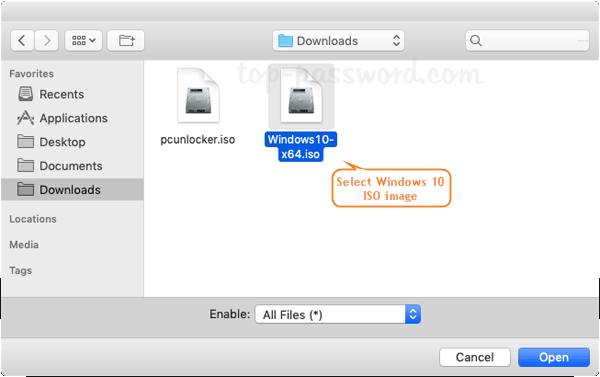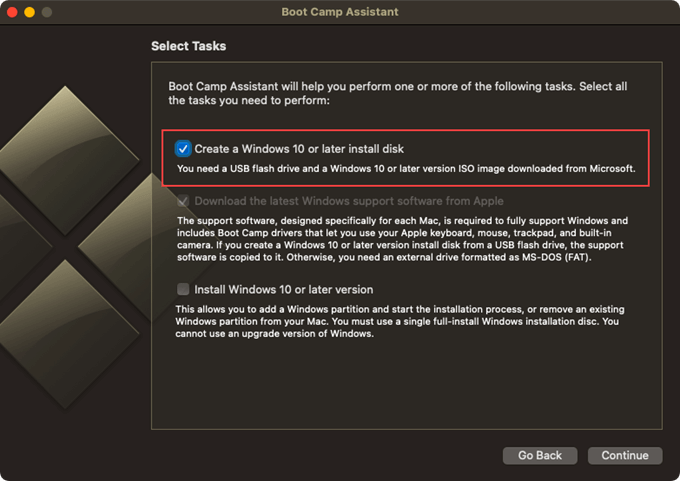
- How to create a bootable installer for mac os on windows how to#
- How to create a bootable installer for mac os on windows install#
- How to create a bootable installer for mac os on windows upgrade#
- How to create a bootable installer for mac os on windows password#
Updated November 2020: Updated for macOS Big.In case anyone stumbles onto this thread I'm going to give what I believe to be the easiest solution to this problem.
How to create a bootable installer for mac os on windows how to#
You'll be happy you did! Questions?ĭo you have any questions about how to create a bootable drive for the macOS Big Sur installer? Let us know in the comments. If you're in the market for a new computer, be sure to check out our list of the current Macs.
Follow the installation process when prompted. Select the external drive with macOS Big Sur on it from the systems' list to start up your computer. Hold down the Option key when it starts up. Connect the external drive to your Mac via the USB port. How to create a bootable installer for mac os on windows install#
Turn off the Mac you want to install macOS Big Sur with the bootable installer drive. If you're upgrading to macOS Big Sur, follow the steps below. 
If you're downgrading from macOS Big Sur, please check out this guide instead.
How to create a bootable installer for mac os on windows upgrade#
You can use this installer to upgrade your operating system easily on multiple Macs or to help downgrade if you decide you want to go back to an earlier version of macOS. Once macOS Big Sur is installed on your external drive, you can install it on any Mac with the drive plugged into it. How to install macOS Big Sur with a bootable installer drive When it is done, the Terminal window will report "Done." Your external hard drive will now be named "Install macOS Big Sur." Safely eject the drive from your Mac.

The process could take a very long time, depending on the drive. No text will appear in Terminal when you enter the password.
How to create a bootable installer for mac os on windows password#
This is the password you use to make changes on your Mac or log in.
Enter your administrator account password. Sudo /Applications/Install\ macOS\ Big\ Sur.app/Contents/Resources/createinstallmedia -volume /Volumes/MyVolume Names are case sensitive and shouldn't have space.): The name of the drive can't have any spaces, and it is case sensitive.Įnter the following text into Terminal ( Don't forget to change the name "MyVolume" in the text below to the actual name of your external drive. If it is not named "MyVolume," you will need to change the command syntax for the pathname where it says: Volumes/MyVolume. Recall the name of your formatted external drive when entering the following text into Terminal. Scroll down and double click on Terminal. You'll also need to ensure that macOS Big Sur is in your Applications folder, and you'll need to know the name of the external drive. Important: You will need to use an administrator account on your Mac to run the Terminal commands to create a boot drive. How to put macOS Big Sur onto your external drive :max_bytes(150000):strip_icc()/DiskUtilitycontinueannotted-466f545a0f694970be81b88d10e2ac92.jpg)
Your thumb drive or external hard drive is now ready.
Click Done when the process is complete. If Scheme is available, select GUID Partition Map. Select Mac OS Extended from the format list. If you have more than one external drive with the same name, you will need to rename the drive you are using as a bootable installer now. Note the name of your external hard drive (probably "Untitled") because you will need it when you create a bootable drive. Select your thumb drive or external drive under External.Ĭlick on the Erase tab at the top of the window. Scroll down and double-click on Disk Utility. Scroll down and double-click on Utilities. Select Applications from the list on the left side of the window. Click on Finder in your Dock to open a Finder window. Plug the thumb drive or cable for your hard drive into the appropriate port on your Mac. You'll need to start with a clean thumb drive or external hard drive to make it a bootable drive. How to format your external drive for macOS Big Sur




:max_bytes(150000):strip_icc()/DiskUtilitycontinueannotted-466f545a0f694970be81b88d10e2ac92.jpg)


 0 kommentar(er)
0 kommentar(er)
